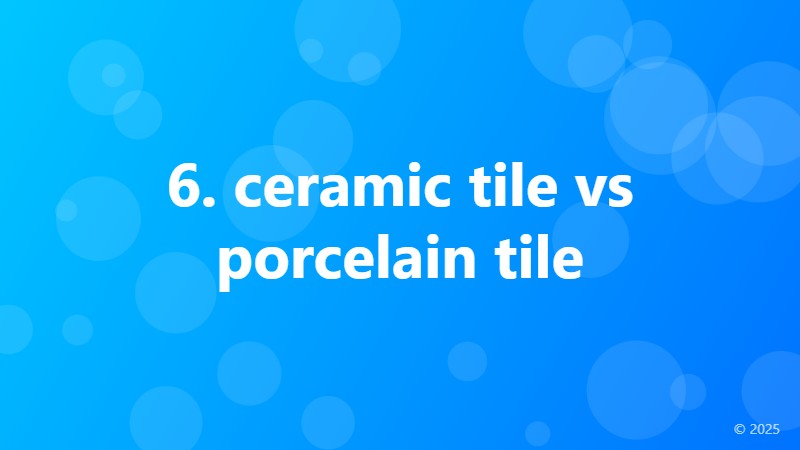6. ceramic tile vs porcelain tile

Understanding the Difference: Ceramic Tile vs Porcelain Tile
When it comes to choosing the right tile for your home or office, the options can be overwhelming. Two popular choices, ceramic tile and porcelain tile, are often considered, but what's the difference between them? In this article, we'll delve into the characteristics, benefits, and drawbacks of each to help you make an informed decision.
What is Ceramic Tile?
Ceramic tile is a type of tile that is made from clay, water, and other minerals, which are mixed together and then fired in a kiln at high temperatures. This process creates a hard, non-porous surface that is resistant to water and stains. Ceramic tiles are often glazed, which adds an extra layer of protection and aesthetic appeal.
What is Porcelain Tile?
Porcelain tile, on the other hand, is a type of ceramic tile that is made from a specific type of clay called kaolin. This clay is more refined and pure, resulting in a denser and more durable tile. Porcelain tiles are also fired at higher temperatures than ceramic tiles, making them even more resistant to water and stains.
Key Differences: Ceramic Tile vs Porcelain Tile
So, what are the key differences between ceramic tile and porcelain tile? Here are some of the main distinctions:
- Water Absorption: Ceramic tiles have a higher water absorption rate than porcelain tiles, making them more prone to water damage and staining.
- Durability: Porcelain tiles are more durable and resistant to scratches and chips than ceramic tiles.
- Appearance: Ceramic tiles often have a more rustic, earthy look, while porcelain tiles have a more refined, sleek appearance.
- Cost: Ceramic tiles are generally less expensive than porcelain tiles.
When to Choose Ceramic Tile
Ceramic tile is a great choice for:
- Bathrooms and kitchens, where moisture is present.
- Areas with low foot traffic.
- Those on a budget.
When to Choose Porcelain Tile
Porcelain tile is a great choice for:
- High-traffic areas, such as commercial spaces or busy households.
- Areas that require extreme durability, such as outdoor spaces.
- Those who want a more luxurious, high-end look.
Conclusion
In conclusion, while both ceramic tile and porcelain tile have their own unique benefits and drawbacks, understanding the differences between them can help you make an informed decision for your next tile installation project. By considering factors such as durability, appearance, and cost, you can choose the perfect tile for your needs.